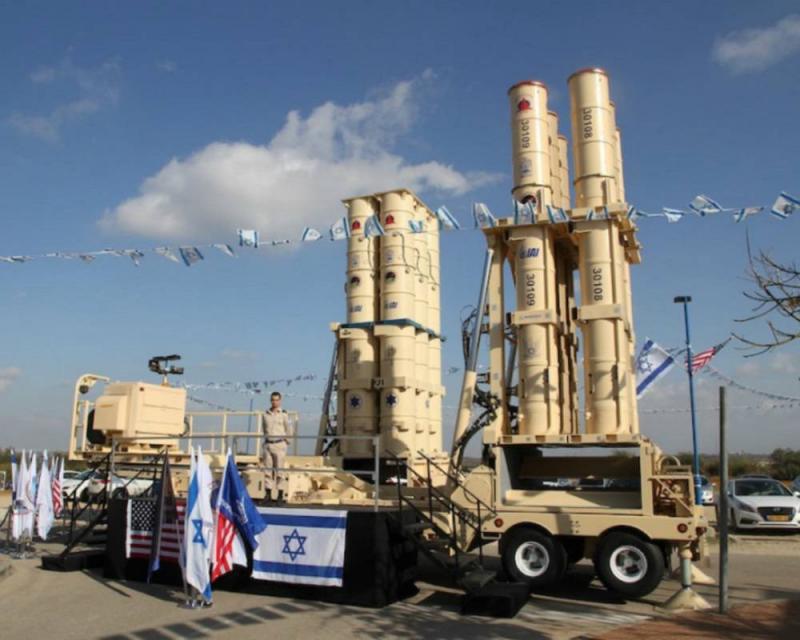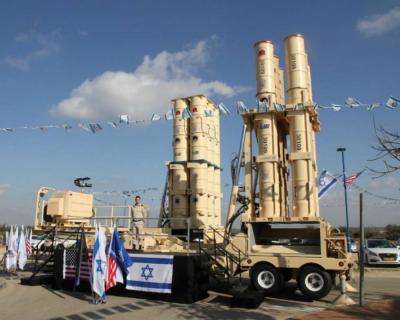As the world holds its breath with escalating tensions between Iran and Israel, especially after the Israeli targeting of the Iranian consulate in Damascus on April 1, and Iranian officials' threats of retaliation, Israel has confirmed that all preparations are complete to thwart any potential scenarios against Iran. They emphasized that their defense systems have finalized all setups and plans.
Over the past 15 years, Israel has significantly modernized its air defenses, adding new systems to intercept ballistic missiles launched from distances up to 2,400 kilometers. This range includes Yemen, Syria, and Iraq, where armed factions allied with Iran are stationed, along with Iran itself, according to U.S. news agency Bloomberg.
### Years of Testing
While these new systems have undergone years of testing to become fully operational and have achieved successful interceptions in battlefield conditions, they have yet to face extensive, large-scale attacks. Below is an overview of the various air defense systems possessed by Israel, which have kept its skies largely protected from projectiles and missiles launched by factions in Gaza, primarily Hamas.
**Iron Dome**
The Iron Dome is the most active and well-known system in Israel, having intercepted thousands of missiles launched by Palestinian factions from Gaza since 2011. However, the Iron Dome is designed for short-range missiles and drones, ranging from 4 kilometers to 70 kilometers. Nonetheless, it remains one of several advanced missile defense systems available to Israel. Israel also has a naval version of the Iron Dome, known as "C-Dome," which utilizes the same interception system as the ground-based Iron Dome, according to Rafael Advanced Defense Systems, the government-operated company managing the system.
Earlier this week, Israel deployed its new ship-mounted missile defense system "C-Dome" for the first time to counter a "suspicious aerial target" that infiltrated airspace in the Eilat area in southern Israel, according to the Israeli military.
**David's Sling**
Israel has another system called "David's Sling," deployed in 2017 to intercept medium to long-range projectiles. David's Sling was developed jointly by Israel's Rafael Advanced Defense Systems and U.S.-based Raytheon Technologies, designed to fill the gap between the Iron Dome and a more advanced system known as "Arrow." It is designed to detect and destroy ballistic missiles, cruise missiles, and drones over a range of up to 200 kilometers, covering Gaza and southern Lebanon, where Hezbollah, an Iranian-backed group, is believed to possess 150,000 missiles, some of which are highly accurate.
**Arrow**
Israel also has the advanced missile defense system known as "Arrow," which consists of "Arrow 2" and "Arrow 3." This system can intercept missiles launched from distances of up to 2,400 kilometers, both within the Earth's atmosphere and beyond, providing extensive coverage for strategic sites and large populated areas. It can also destroy long-range threats, including those carrying weapons of mass destruction. In November, the Israeli military announced the use of the Arrow system for the first time since the onset of the Gaza war to counter a projectile launched from the Red Sea as the Houthis began targeting southern Israel. The United States is a partner in the Arrow project, jointly developed by the Israeli Missile Defense Organization and the U.S. Missile Defense Agency.
**Iron Beam**
The Israeli military is testing a system called "Iron Beam," which uses laser beams to intercept projectiles launched from close range at a lower cost than the Iron Dome. The cost of a single missile from the Iron Dome system runs into thousands of dollars. However, it is not expected that "Iron Beam" will be operational before mid-2025.




